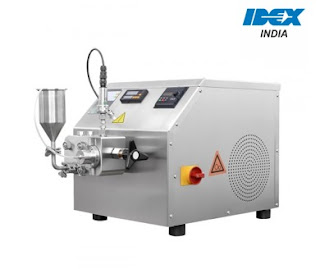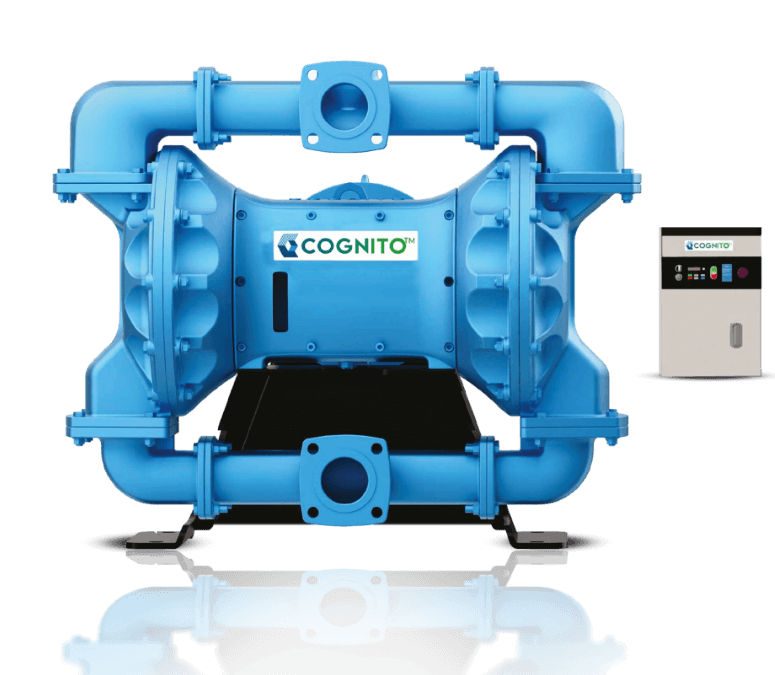High Pressure Homogenizer a Complete Guide
 |
| High Pressure Homogenizer a Complete Guide |
When you're working with liquids, it's really important to
get a smooth, even mix. This is true whether you're making a creamy sauce in
your kitchen or creating important medicines. Getting that perfect blend is the
goal. That's where high-pressure
homogenizers come in. They use a lot of pressure to make sure
everything is mixed together really well, no matter how different the things
you're mixing may be.
What is High Pressure Homogenization?
Think about trying to suck a really thick milkshake through a
tiny straw really fast. That's pretty much what high
pressure homogenization does! It's a process that uses a lot of
pressure to break up and spread out the different parts of a liquid mix. This
makes the mix really smooth and also helps it stay good for longer and have
other desired qualities as per the usage.
What is the Working Principle of High Speed Homogenizer?
The most important parts of a high-pressure homogenizer are its pump and valve system. The pump
pushes the mix really fast through a small opening in the valve. This creates a
lot of pressure, which makes the different parts of the mix crash into each
other and break down into smaller and smaller pieces. It breaks up any lumps or
droplets until they're super small.
Understanding the Forces at Play
The effectiveness of high
pressure homogenizers stems from the interplay of three key forces:
Shear Forces: As the liquid experiences high
flow rates through the narrow valve, immense shear forces act upon it. Imagine
the liquid being stretched and torn apart by the rapid flow, leading to the
breakdown of larger particles and droplets.
Cavitation: The rapid pressure drop within the
valve creates microscopic bubbles that violently collapse. This cavitation
phenomenon generates intense shockwaves and micro-jets, further contributing to
particle size reduction and homogenization.
Impact: Collisions between particles and the valve
components, as well as inter-particle collisions, play a significant role in
size reduction and dispersion.
Variables and Considerations to Optimizing Performance
Several factors influence the effectiveness of high pressure
homogenization:
Pressure: Higher pressures generally result in finer particle
sizes. However, overly high pressures can degrade heat-sensitive materials and
necessitate increased energy consumption.
Number of Passes: Repeating the homogenization
process through the valve multiple times can further reduce particle size and
achieve greater uniformity.
Feedstock Characteristics: The viscosity, temperature,
and initial particle size of the mixture can impact the efficiency and optimal
settings for homogenization.
Valve Geometry: The design and dimensions of the
valve opening influence the intensity of shear forces and cavitation, affecting
the homogenization outcome.
Applications Spanning Industries
The versatility of high pressure homogenizers makes them
invaluable across diverse industries:
Food & Beverage: Homogenized milk boasts a longer
shelf life and a smoother texture. Think creamy salad dressings, velvety soups,
and perfectly stable fruit juices—all thanks to homogenization magic.
Pharmaceuticals: From dispersing active ingredients
in suspensions to creating uniform emulsions for vaccines, high
pressure homogenizers ensure consistent drug delivery and efficacy.
Cosmetics: Imagine lotions without gritty
exfoliants or serums with perfectly dispersed actives. Homogenization brings smooth
textures and enhanced product stability to the world of beauty.
Nanotechnology: Nanoparticles, the wonderkids of
the scientific world, require precise size control for various applications. High
pressure homogenizers offer a gentle yet effective way to achieve this.
Advanced Applications and Emerging Trends
Beyond the standard applications, high pressure homogenization is pushing boundaries in several
areas:
Nanoemulsions: Homogenization plays a crucial
role in creating stable nanoemulsions for drug delivery, diagnostics, and
cosmetic applications.
Cell Disruption: High pressure can effectively
disrupt cells for extracting valuable intracellular components or preparing
cell lysates for biochemical analysis.
Homogenization of High Viscosity Fluids:
Specialised homogenizers equipped for handling viscous materials like oils,
pastes, and gels are making headway in various industries.
Microfluidics and Homogenizer Solutions by IDEX
IDEX, a leading player in fluidic technologies, steps up to
the homogenization challenge with its Microfluidic solutions. Their
microchannel homogenizers utilise precisely engineered microfluidic channels to
achieve exceptional particle size reduction at lower pressures. This translates
to gentler processing, increased efficiency, and even compatibility with
heat-sensitive materials.
Benefits of IDEX Microfluidic Homogenizers
Reduced energy consumption: Compared to traditional high pressure homogenizers, IDEX
solutions require significantly less energy, making them eco-friendly and
cost-effective.
Scalability: From lab-scale to pilot and
production setups, IDEX offers a range of homogenizers to fit your needs.
Gentle processing: Ideal for heat-sensitive materials
and delicate biomolecules, IDEX homogenizers minimise degradation and preserve
product integrity.
Precise control: The Microfluidic channels ensure
consistent and predictable particle size reduction, leading to reliable and
reproducible results.
Embracing Homogenization for a Flawless Future
High pressure homogenizers are not just powerful tools;
they're enablers of innovation. From revolutionising the smoothness of your
morning smoothie to ensuring the potency of life-saving drugs, these
homogenizers pave the way for a future where uniformity reigns supreme. And
with IDEX Microfluidic solutions pushing the boundaries of efficiency and
precision, the possibilities for enhanced liquid processing are truly
limitless. Continuous advancements in materials, design, and control systems
are shaping the future of high pressure
homogenization:
ncreased Efficiency: Lower energy consumption through
optimised designs and novel materials is a key focus area.
Enhanced Precision: Improved control systems and
monitoring technologies will enable more precise tailoring of homogenization
processes for specific applications.
Microfluidic and Ultrasonic Integration: Combining
high pressure with microfluidic channels or ultrasonic technology presents
opportunities for gentler and more targeted homogenization.
Conclusion
High pressure homogenization technology continues to evolve and refine its methods, playing a vital role in achieving uniformity and desired properties in diverse liquid mixtures. Understanding the underlying principles, process variables, and emerging trends empowers researchers, engineers, and manufacturers to leverage this technology effectively across various industries. As the boundaries of homogenization expand, new possibilities for innovation and enhanced product quality beckon in a multitude of fields.



Comments
Post a Comment